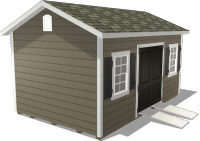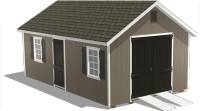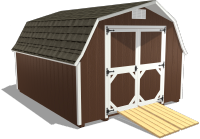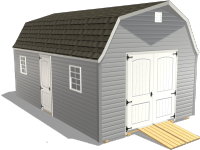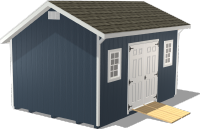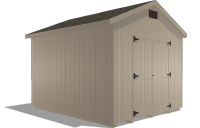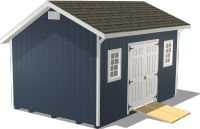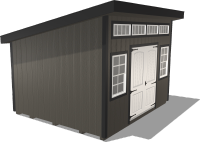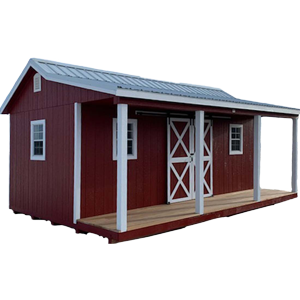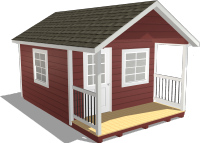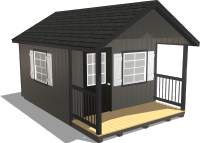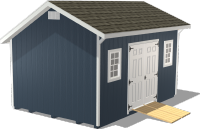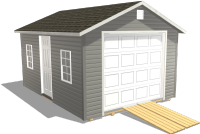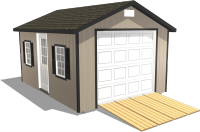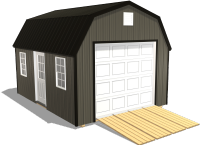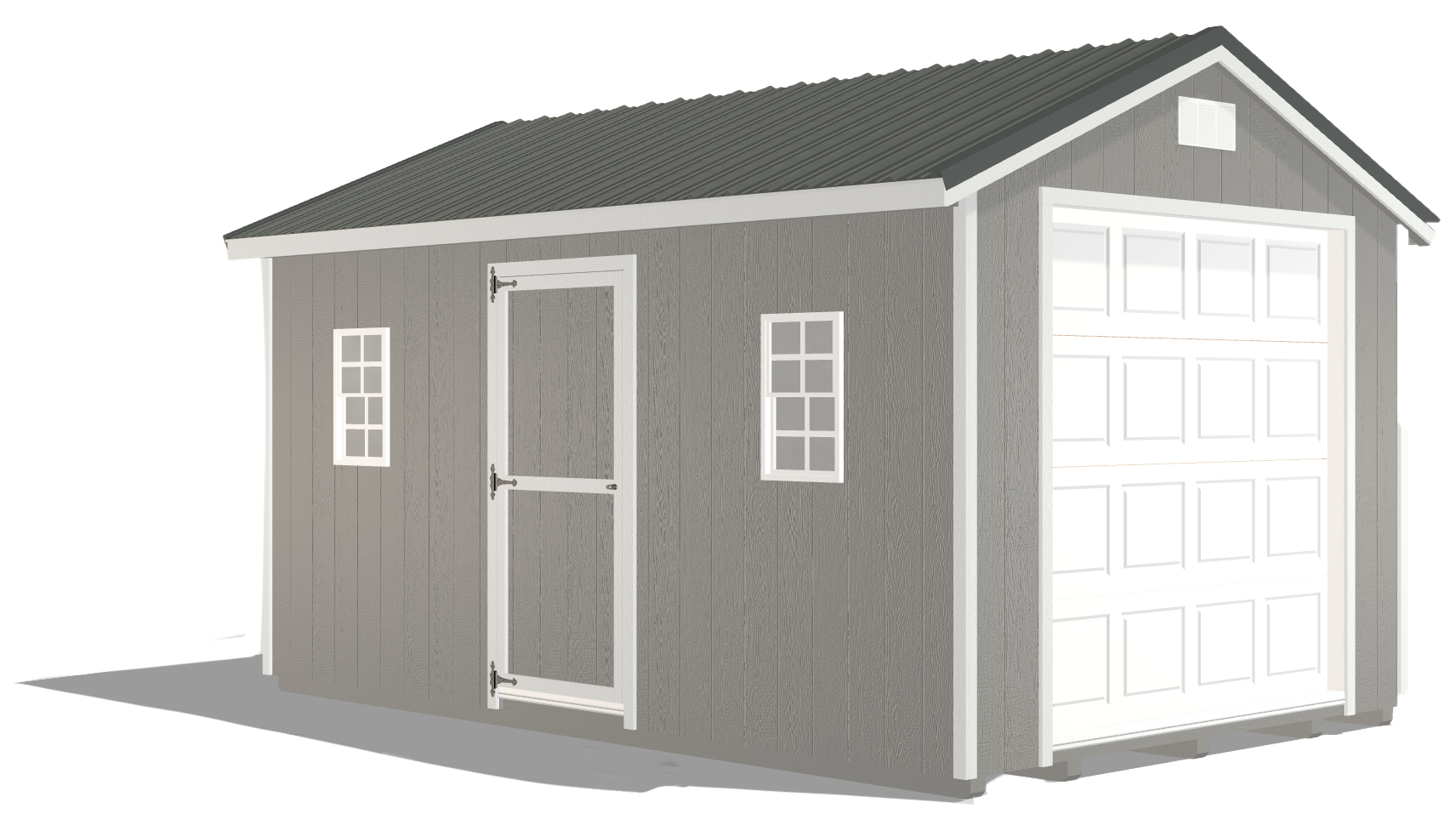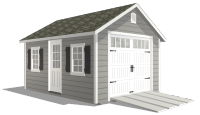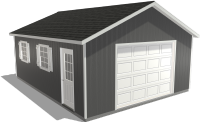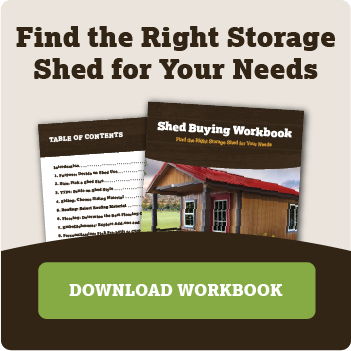Ready for a Custom Shed? Start with a Solid Storage Shed Foundation
by Dakota Storage Buildings, on August 27, 2024

When purchasing an outdoor storage shed, ensuring its longevity and stability is crucial. Many homeowners may overlook the importance of a solid foundation, but this initial step is vital to the shed's overall performance and durability. A well-constructed storage shed foundation provides the necessary support, keeping your shed level, secure, and protected from various environmental factors. By investing time and resources into selecting and building the right foundation, you can prevent future issues and enjoy a reliable storage solution for years.
Why Your Shed Needs a Solid Foundation
A solid foundation is the backbone of any well-built outdoor storage shed. It ensures that the structure remains stable and secure over time, providing a reliable base for the shed’s overall integrity.
Ensure Longevity With a Stable Base
A stable shed base prevents the shed from shifting or settling, which can cause structural issues over time. Without a proper foundation, the weight of the shed can cause it to sink unevenly, leading to cracks in the outdoor shed floors, walls, and roof. This instability can compromise the shed’s durability and safety, making it essential to start with a strong storage shed foundation to support the weight and withstand environmental pressures.
Protect Your Shed from Moisture
Elevating the shed off the ground helps protect it from moisture, preventing rot and corrosion. If an outdoor storage shed does not have the proper foundation, water can easily seep into it, causing wood to rot and metal to rust. By keeping the shed elevated, you create a barrier that keeps water away from the materials, significantly extending the life of the shed and reducing the risk of water-related damage. Proper drainage systems, like a gravel base for sheds, can help direct water away and keep it dry.

Secure Your Shed Against Pests
A solid storage shed foundation can deter pests from entering and damaging the outdoor storage shed. Rodents, insects, and other pests are less likely to invade a shed that has a secure and sealed base. This protection is crucial in maintaining the structural integrity of the shed and preventing damage to stored items. By choosing materials like gravel, concrete, or pressure-treated wood, you can ensure a safe and pest-free storage space.
Avoid Misalignment for Enhanced Functionality
Leveling the ground for sheds keeps doors and windows functioning properly. When a shed is built on an uneven base, it can cause doors and windows to shift, making them difficult to open and close. Misalignment can also compromise the shed’s usability and security by creating gaps that let in water and pests. A foundation that is perfectly level helps keep structural elements aligned, contributing to the overall functionality and appearance of the shed.
Reducing Maintenance Costs
Investing in a solid storage shed foundation upfront can save on costly repairs and maintenance in the long run. While the initial investment might seem high, it pays off by reducing the need for frequent repairs and replacements. A well-built foundation extends the life of your outdoor storage shed, providing a return on investment through reduced maintenance costs and prolonged durability. This proactive approach to building a shed can result in significant long-term savings and a more reliable storage solution.
3 Types of Storage Shed Foundations
.jpg?width=100&height=100&name=Blog_Concrete%20Foundation_300x300%20(1).jpg)
1. Concrete Slabs
Concrete slabs are one of the most durable storage shed foundation options. They provide a flat, impermeable surface that evenly supports the shed's weight to ensure long-term stability.
Benefits:
- Highly durable
- Low maintenance
- Excellent protection against pests and moisture
- Fire-resistant
- Withstands harsh weather conditions
Installation Process:
Step 1: Ensure the area is free of debris and excavate to the necessary depth, typically around 4-6 inches.
Step 2: Construct a temporary frame around the foundation's perimeter using 2’x4’ lumber to build a three-sided frame.
Step 3: Fasten the frame to wooden or steel stakes from the outside to ensure it is easy to remove.
Step 4: Mix and pour the concrete into the frame, then use a screed to level the surface.
Step 5: Let the concrete cure for at least 24-48 hours to achieve maximum strength.
Step 6: Remove the temporary frame after the shed is placed.
.jpg?width=100&height=100&name=Blog_Gravel%20Foundation_300x300%20(1).jpg)
2. Gravel Pads
A gravel base for sheds is another popular option, particularly Class 5 gravel. It offers excellent drainage and prevents water from pooling under the shed. This helps protect the shed from moisture damage.
Benefits
- Good drainage
- Easy to install
- Cost-effective
- Adjustable for future expansion
Installation Process
Step 1: Clear the area and dig to the required depth to ensure a stable shed base.
Step 2: Construct a temporary frame around the foundation's perimeter using 2’x4’ lumber to build a three-sided frame.
Step 3: Fasten the frame to wooden or steel stakes from the outside to ensure it is easy to remove.
Step 4: Lay down landscape fabric to prevent weeds from growing. This helps maintain the integrity of the gravel pad and prevents unwanted vegetation.
Step 5: Fill the frame with at least 3 to 4 inches of Class 5 gravel, spreading it evenly across the area.
Step 6: Use a compactor to ensure the gravel is firmly packed and level.
Step 7: Remove the temporary frame after the shed is placed.

3. Pressure-Treated Wood Foundations
Pressure-treated wood foundations are a versatile and easier-to-install option. They provide good support and are resistant to rot and pest damage.
Benefits
- Easy installation
- Resistant to rot and pests
- Lightweight for easy handling
Installation Process
Step 1: Clear and level the site, then place landscape fabric to prevent weeds from growing.
Step 2: Construct a sturdy frame that matches the shed's dimensions, ensuring it is square and level.
Step 3: Add a layer of gravel inside the frame to enhance the foundation’s drainage and stability.
Step 4: Attach the shed to the wooden frame using appropriate fasteners, ensuring a secure and stable connection.
Prepping Your Backyard for Shed Installation
First, you must check local building codes and regulations to ensure you stay compliant with any specific shed installation requirements. Choosing the right area to place a shed in your backyard is crucial. Position the outdoor storage shed so it takes advantage of natural drainage patterns and sunlight. This will help maintain a dry and well-lit interior. Proper site preparation is crucial for a solid storage shed foundation. Start by removing any grass, plants, or debris from the site to create a clean, level surface. This step helps prevent future issues with vegetation growth under the outdoor storage shed.
Once everything is cleared, ensure the ground is level to provide a stable shed base. You can check the evenness and make necessary adjustments with a level and measuring tools. Add a layer of landscape fabric to protect the foundation from weeds and moisture. The fabric acts as a barrier, preventing unwanted plant growth and helping maintain a dry environment under the shed.
Determining the Best Foundation for Your Shed Needs
Selecting the best foundation for your shed depends on your specific needs and environmental conditions. You must consider the soil type, climate, and intended use of the shed. For instance, areas with high moisture levels may need a gravel base for sheds for better drainage, while concrete slabs provide extreme durability during harsh weather. Think about how you plan to use the outdoor storage shed. A heavy-duty workshop may need a more durable foundation compared to a garden shed or storage unit.

Comparing the costs and benefits of each foundation type is essential for making an informed decision. While concrete slabs may have higher initial costs, they offer long-term durability and minimal maintenance. This could save you money over time. Gravel pads and pressure-treated wood foundations are more cost-effective upfront but could require more frequent maintenance. Consulting with professionals can give you valuable insights and help you choose the best foundation for your shed. Experts can assess your site, recommend suitable materials, and ensure the foundation is properly constructed to support your shed's longevity and stability.
Essential Maintenance Tips for Your Shed Foundation
Regular maintenance is essential to ensure the longevity and stability of your outdoor storage shed's foundation. By keeping a vigilant eye on your foundation, you can prevent minor issues from becoming significant problems that require costly repairs.
Regular Foundation Inspections for Longevity
Conduct thorough inspections of your outdoor storage shed's foundation at least twice a year. Look for signs of wear, damage, or settling. This could include cracks in concrete slabs, shifts in gravel pads, or signs of rot in wooden foundations. Severe weather events can cause immediate damage or intensify existing issues so it is important to inspect the foundation after the weather has passed. Leveling the ground for sheds can help ensure the foundation remains even, keeping doors and windows functioning correctly.

Maintain Clean Surroundings to Prevent Moisture Buildup
It is important to keep the area around your storage shed foundation clear of leaves, dirt, and other debris that can trap moisture. When moisture accumulates, it can lead to mold and mildew growth or cause wood to rot and metal to corrode. Regularly sweep or rake away any debris and consider adding a layer of mulch or gravel around the perimeter to improve drainage and discourage pests.
Make Timely Repairs to Prevent Bigger Issues
At the first sign of any problems, take immediate action to prevent further damage. If you notice cracks in a concrete slab, seal them with an appropriate filler to prevent water infiltration. For wooden foundations, replace any rotting or damaged boards and treat the wood with a sealant to extend its life. Promptly addressing these issues helps maintain the structural integrity of your shed and avoids costly repairs in the future.
Set Your Shed Up for Success With a Solid Foundation
A solid storage shed foundation is essential for a durable and stable outdoor storage shed. By investing in the right foundation and properly maintaining it, you can ensure that your storage shed remains functional for years to come. Take the necessary steps to build a strong foundation and enjoy the benefits of a well-constructed shed. To ensure you purchase the best shed once your foundation is complete, download our Shed Buying Workbook. This comprehensive guide will help you make informed choices and find the perfect shed for your needs.



